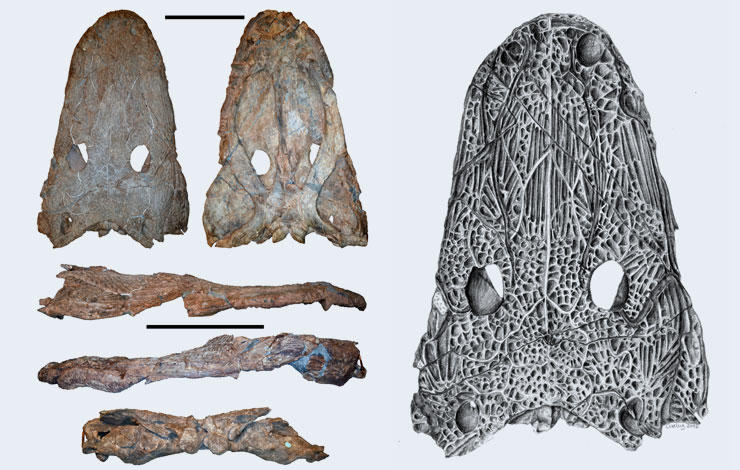17-05-2017

A new species of amphibian, 208 million years old, the largest discovered to date in Greenland, was announced today by an international team that integrates the paleontologists from the NOVA University of Lisbon, Octávio Mateus and Marco Marzola. These paleontologists named it Cyclotosaurus naraserluki, a giant amphibian fossil about 2.5 meters long, which lived about 208 million years ago and is similar to the fossil of a species previously described in the Algarve.
The first author of the study was Marco Marzola, a PhD student at the Universidade NOVA de Lisboa (FCT NOVA, Portugal) and the University of Copenhagen (IGN-KU, Denmark) and collaborator of the Lourinhã Museum and GeoCenter Møns Klint (Denmark). The study also counted on the participation of Prof. Octávio Mateus (FCT NOVA / Museum of Lourinhã), by Prof. Neil H. Shubin (University of Chicago) and Prof. Lars B. Clemmensen (IGN-KU). The study is now published in the prestigious scientific journal Journal of Vertebrate Paleontology and the material studied is on display in Denmark at GeoCenter Møns Klint along with other unique vertebrate fossils from Greenland.

The new species Cyclotosaurus naraserluki lived in the eastern lakes of Greenland during the Triassic, 208 million years ago, at the beginning of dinosaur evolution. The new amphibian, represented by a full skull and two vertebrae, was discovered in the early 1990s during the expeditions led by the late Prof. Farish A. Jenkins Jr. (1940-2012) of Harvard University and remain un-studied until now. This fossil comes from rocks from the Triassic Fleming Fjord Formation in Jameson Land, eastern Greenland.
The Cyclotosaurus naraserluki has a flat, triangular skull 57 cm long and 42 cm wide, allowing paleontologists to estimate a total body length of about 2.5 meters. The Cyclotosaurus are the temnosponds amphibians already known in Germany and Poland and Svalbard, but the species of Greenland represents the species to the north and the west of the distribution of this sort.